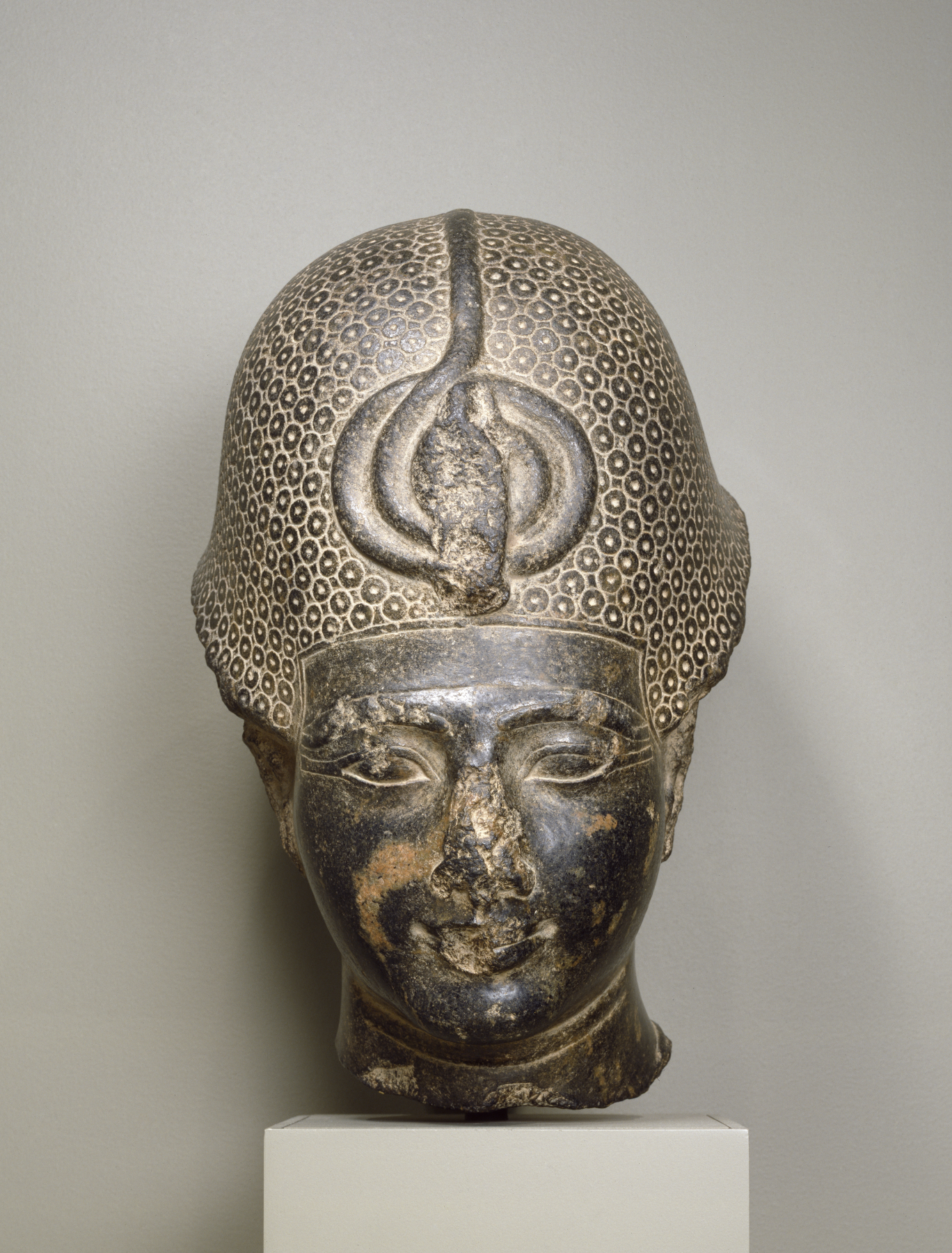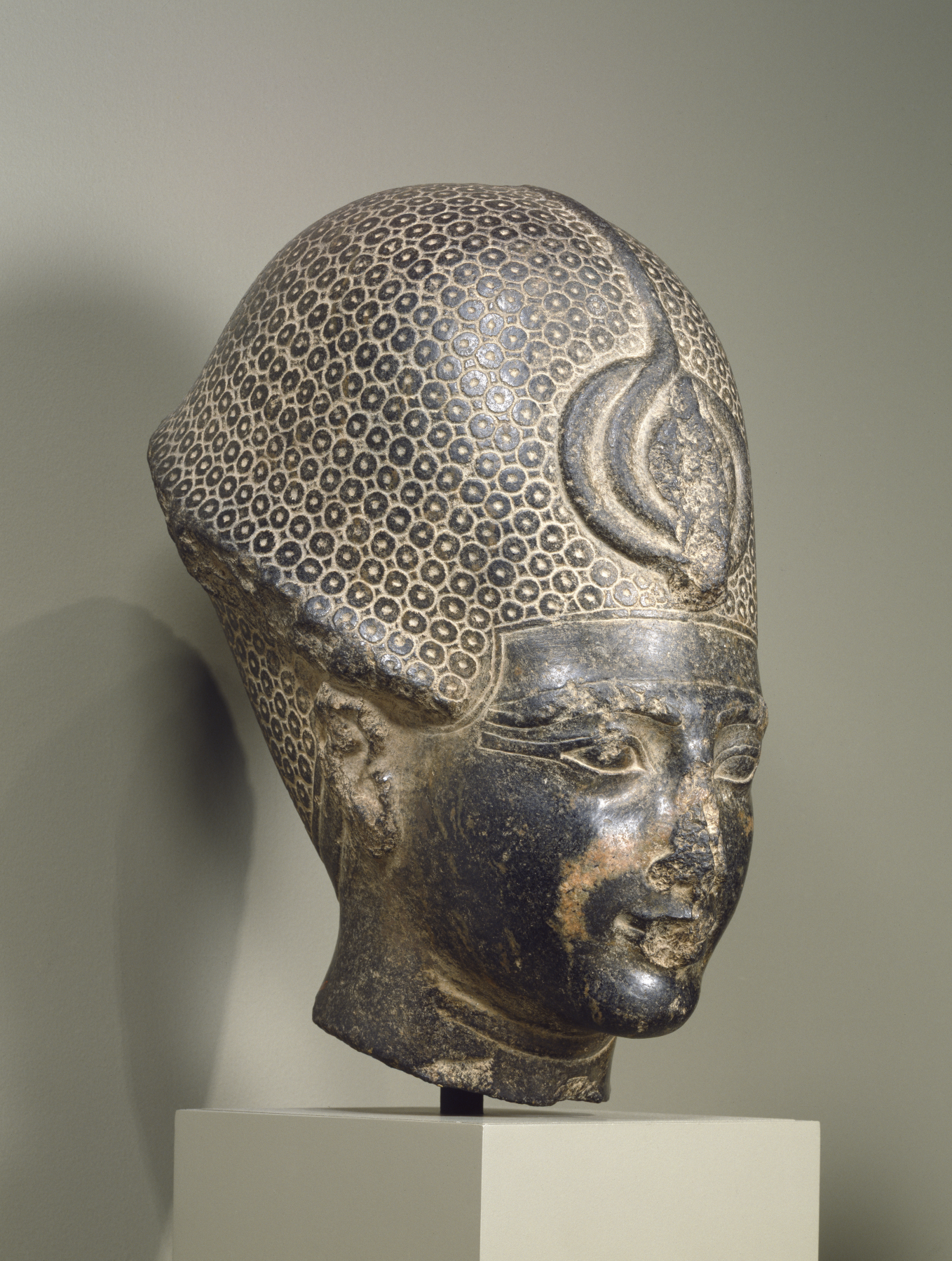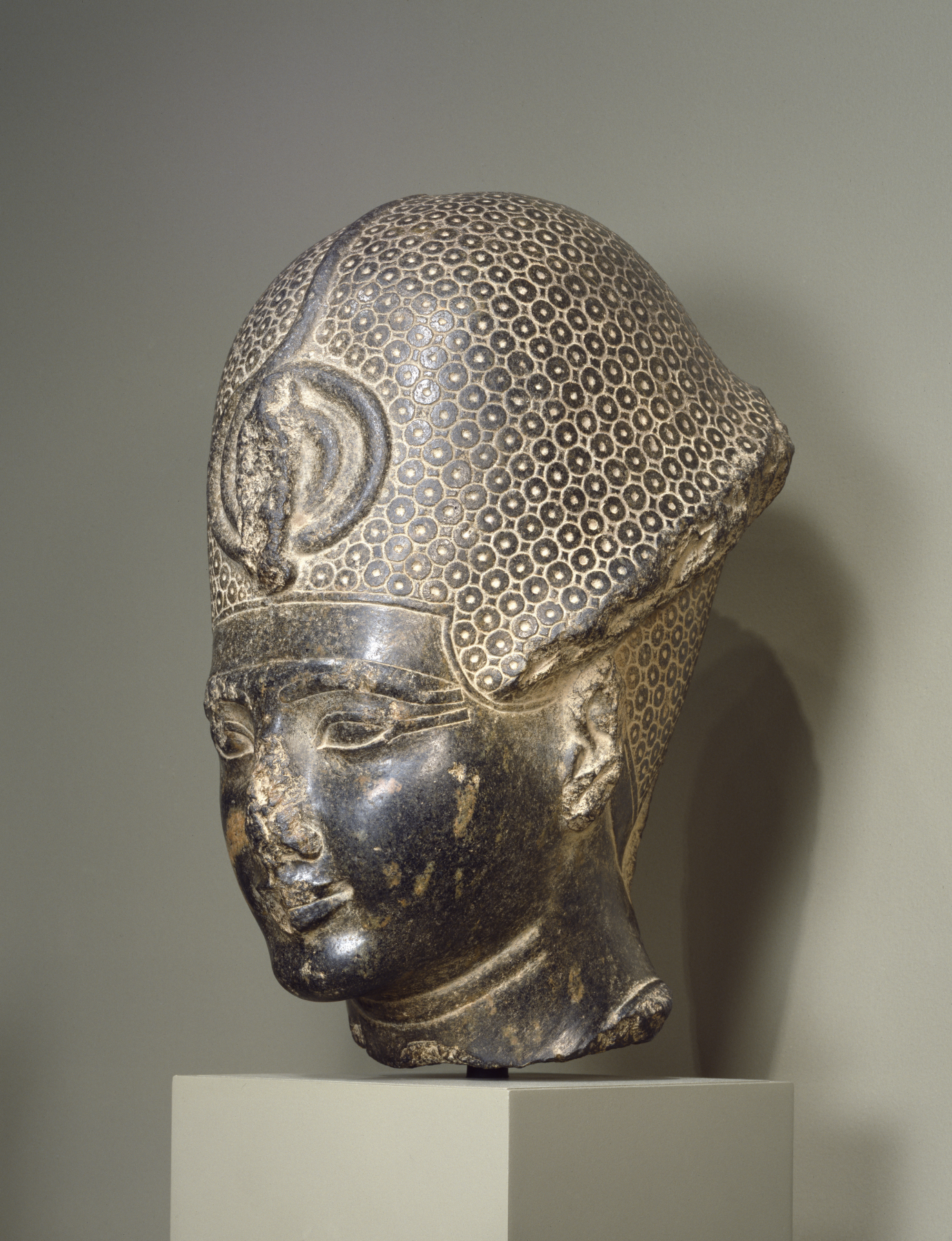Head of a Statue of Amenhotep III, Re-Carved for Ramesses II
(Ancient Egypt and Nubia )
King Amenhotep III carried out a number of large-scale architectural and sculptural programs during his long reign (1388-1348 BCE). Ramesses II, a king of the succeeding 19th Dynasty, much admired his predecessor's accomplishments and set out to copy them. At times, he simply usurped or recarved Amenhotep III's works, as in the case of this statue. The khepresh, or "blue crown," appears frequently in royal sculpture of the New Kingdom. The king wore this crown on campaigns or in ceremonial processions. As with all royal headdresses, the coiled, protective uraeus serpent appears at the brow.
Provenance
Provenance (from the French provenir, 'to come from/forth') is the chronology of the ownership, custody, or location of a historical object. Learn more about provenance at the Walters.
Dikran Kelekian, New York and Paris, [date and mode of acquisition unknown] [said to be from Upper Egypt]; Henry Walters, Baltimore, 1923, by purchase; Walters Art Museum, 1931, by bequest.
Conservation
| Date | Description | Narrative |
|---|---|---|
| 7/14/1967 | Treatment | cleaned |
| 6/24/1971 | Treatment | cleaned |
| 9/14/1998 | Examination | survey |
| 9/23/1999 | Treatment | cleaned |
Geographies
Egypt, Luxor (Thebes) (Place of Origin)
Measurements
17 x 11 1/4 x 12 5/8 in. (43.2 x 28.6 x 32 cm)
Credit Line
Acquired by Henry Walters, 1923
Location in Museum
Accession Number
In libraries, galleries, museums, and archives, an accession number is a unique identifier assigned to each object in the collection.
In libraries, galleries, museums, and archives, an accession number is a unique identifier assigned to each object in the collection.
22.107






